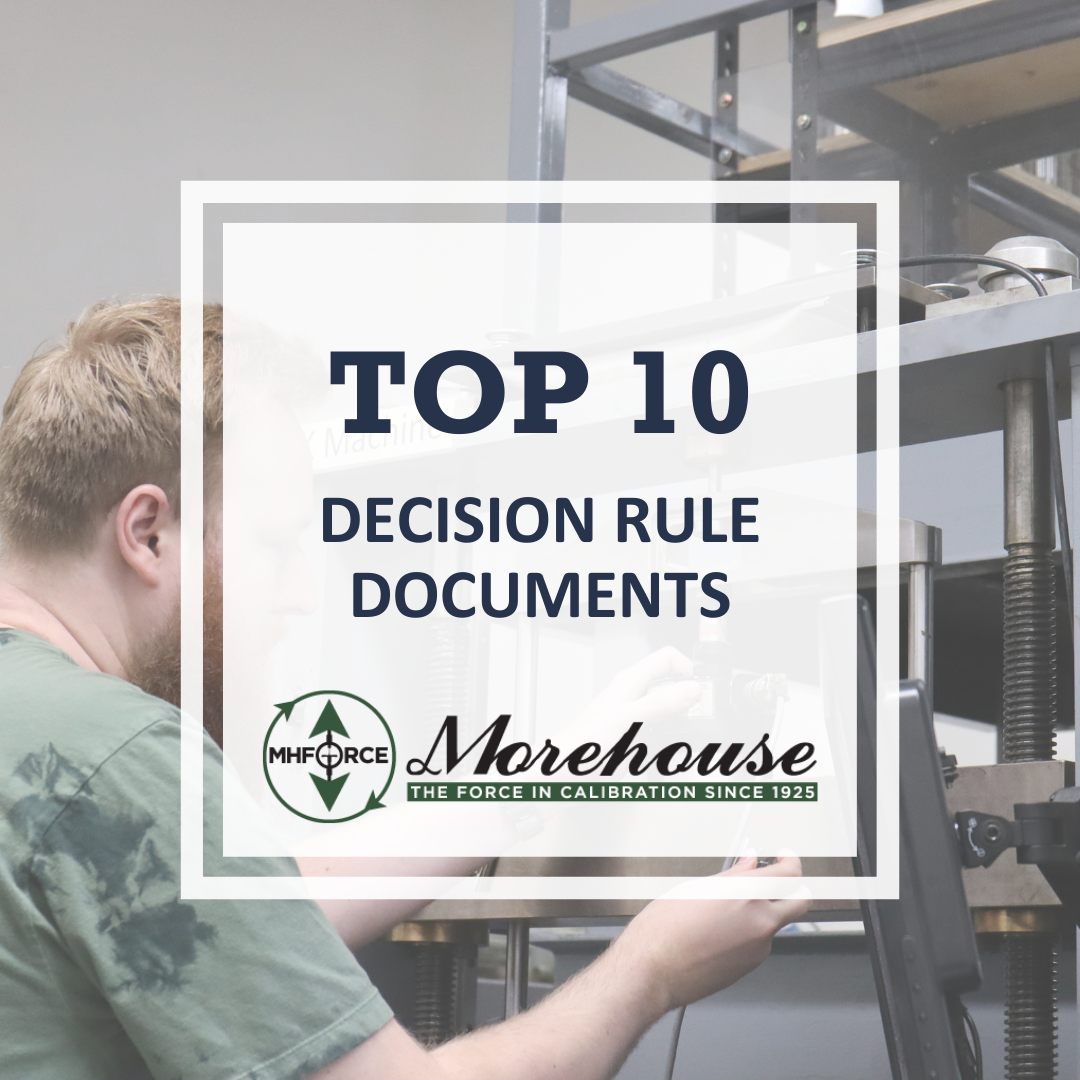Decision Rules - Our Top 10 Recommended Reading
Many people struggle with decision rules and implementing decision rules. At Morehouse, we have been privileged to be part of the Metrology Handbook 3rd Edition, where we helped write a chapter on decision rules.
Though it was an honor to write that and other chapters, there are many more documents and papers one should read to get a full grasp on decision rules.
Therefore, we made a top 10 list, in no particular order, called Decision Rules - Our Top 10 Recommended Reading List.
This will be our first blog of many, where we will be pulling content from these documents.

ISO/IEC 17025 defines a decision rule as a “rule that describes how measurement uncertainty is accounted for when stating conformity with a specified requirement.”ISO/IEC 17025 does not specify what the decision rule must be. However, there are other documents that any lab manager should be aware of when it comes to the topics of evaluation of measurement risk and decision rules. The documents include:
- ILAC G8:09/2019 Guidelines on Decision Rules and Statements of Conformity
- JCGM 106:2012 Evaluation of measurement data – The role of measurement uncertainty in conformity assessment
- UKAS LAB 48: Decision Rules and Statements of Conformity
- ISO/IEC 17025 2017 General requirements for the competence of testing and calibration laboratories
- Handbook for the Application of ANSI Z540.3-2006: Requirements for the Calibration of Measuring and Test Equipment
- The Metrology Handbook 3rd Edition Chapter 30
- NCSLI-RP18 Estimation and Evaluation of Measurement Decision Risk
- ASME B89.7.3.1-2001 Guidelines for Decision Rules: Considering Measurement Uncertainty in Determining Conformance to Specifications
- ASME B89.7.4.1-2005 Measurement Uncertainty and Conformance Testing: Risk Analysis
- ISO 14253-5 Part 1: Decision rules for proving conformity or nonconformity with specifications
The first three documents in bold are available for free.
In addition to reading and understanding the documents above, the test and calibration provider must understand the customer requirements for conformance decisions so when the measurement result is reported with confidence, that considers:
- The proper evaluation measurement uncertainty
- If using TUR, the proper calculation of TUR must be used
- Proof of metrological traceability
- Proper application of measurement decision rules to address the risk required in reporting any statements of conformity.
Morehouse has several articles on what goes into a measurement uncertainty budget.
Calculating Force Uncertainty for a Morehouse Force Calibrating Machine
Calculating Force Uncertainty for force machines. This free document identifies all significant contributions to measurement uncertainty when using a force-calibrating machine. Calculating Force Uncertainty describes what is needed to achieve a measurement uncertainty of better than 0.02 % of the applied force.
TUR is defined as:
- The ratio of the span of the tolerance of a measurement quantity subject to calibration to twice the 95% expanded uncertainty of the measurement process used for calibration.[i]
- The ratio of the tolerance, TL, of a measurement quantity divided by the 95% expanded measurement uncertainty of the measurement process where TUR = TL/U.[ii]
[i] ANSI/NCSLI Z540.3 Handbook.
[ii] ILAC-G8, 6.

Figure: Example of a TUR Formula (Adapted from the ANSI/NCSL Z540.3 Handbook
Metrological Traceability
The property of a measurement result whereby the result can be related to a reference through a documented unbroken chain of calibrations, each contributing to the measurement uncertainty. This topic is covered in our free E-book and Force Calibration For Beginners on page 15.
Proper application of measurement decision rules to address the risk required in reporting any statements of conformity.
This topic is covered by reading the above top 10 list.
Decision Rules - Our Top 10 Recommended Reading Conclusion
Any decision rule in making a conformance decision can impact the outcome of the application of the Unit Under Test (UUT). One should have an understanding that decision rules help control the risk of conforming, non-conforming, accepting, rejecting, passing, failing, and more. The documents listed above will help anyone better understand decision rules.
If you enjoyed this content, check out our LinkedIn and YouTube channel for more helpful posts and videos.
Everything we do, we believe in changing how people think about force and torque calibration. We challenge the "just calibrate it" mentality by educating our customers on what matters and what causes significant errors, and focus on reducing them.
Morehouse makes simple-to-use calibration products. We build awesome force equipment that is plumb, level, square, and rigid and provide unparalleled calibration service with less than two-week lead times.
Contact us at 717-843-0081 to speak to a live person or email for more information.


